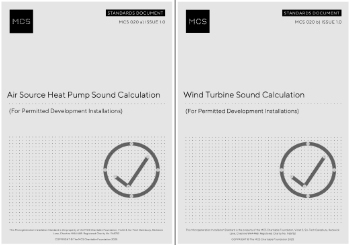Flat springs
Contents |
Introduction
Flat springs are flat strips of material which, when deflected by an external load, store and release energy. These types of spring are small, stamped metal components that function like a spring by controlling deflection within small or restricted spaces.
Manufactured from high carbon spring steel, nickel-silver, high nickel alloys and stainless steel, a flat spring can function as a spacer or ground.
Applications
Flat springs come in a range of different shapes and sizes for various applications. They are used for numerous purposes within differing industries, such as motors, office equipment, generators, counterbalances, doors and electrical switchgear.
There are many different types of flat spring including the leaf spring and flat coil spring.
Leaf Spring
Leaf springs are one of the oldest forms of spring, dating back to medieval times, they are an important component in suspension, such as in cars or other vehicles. They provide stability and help minimise wear and tear on other parts.
Created with individual layers or leaves of metal, they are often used in automotive design on drive or steer axles. Constructed of high alloy spring steel or lighter weight materials such as low carbon steel, this type of spring comes in three basic types; mono-leaf springs, multi-leaf springs and parabolic springs.
Mono-Leaf Spring
A mono-leaf spring consists of one plate of springs which is thick in the centre and tapers out to the ends. The amount and length of the taper is critical to the durability and safety of the spring. This type of spring provides lesser spring rates that can hold up a vehicle, also offering less stiffness in terms of bending and controlling the axle.
Multi-Leaf Spring
A multi-leaf spring is an engineered system designed to provide support, stability and safety to a vehicle. The length and make-up of each spring is important as each leaf is designed to carry a proportionate amount of load and stress. Each leaf is designed to provide support to the leaf above and below it, and it is this feature which provides support for the vehicle.
Parabolic Spring
A parabolic spring is a leaf or set of leaves which are tapered in a parabolic form rather than in a linear one. The tapering in a single leaf handles the force distribution from the vehicle to the axle, and works as a complete multi-leaf spring. Parabolic springs design is characterised by fewer leaves the thickness of which varies from the centre to ends following a parabolic curve, preventing unwanted inter-leaf friction. They tend to have more flexibility and are commonly used on buses.
Flat Coil Springs
Flat coil springs are used with a counterweight to control the action of valves, such as those in a vehicle exhaust system. They are wound into a specific configuration to absorb shocks or provide tension, and can be found in seating to provide support, or in automotive applications.
--European Springs and Pressings Ltd 12:46, 15 Nov 2017 (BST)
Related articles on Designing Buildings Wiki
- Compression springs.
- Key qualities of springs.
- Mechanical engineer.
- Spring materials.
- Tension springs v torsion springs.
- Torsion springs and their benefits.
- Using springs in construction to prevent disaster.
- Spotlight On: Flat Springs
- Spotlight on Compression Springs
- The Difference Between Tension and Torsion Springs
- The Importance of Gas Springs
- The Multiple Uses of Compression Springs
- The Uses of Wire Forms Within the Construction Industry
- Types of spring.
Featured articles and news
Heat pump and wind turbine sound calculations for PDRs
MCS publish updated sound calculation standards for permitted development installations.
Homes England creates largest housing-led site in the North
Successful, 34 hectare land acquisition with the residential allocation now completed.
Scottish apprenticeship training proposals
General support although better accountability and transparency is sought.
The history of building regulations
A story of belated action in response to crisis.
Moisture, fire safety and emerging trends in living walls
How wet is your wall?
Current policy explained and newly published consultation by the UK and Welsh Governments.
British architecture 1919–39. Book review.
Conservation of listed prefabs in Moseley.
Energy industry calls for urgent reform.
Heritage staff wellbeing at work survey.
A five minute introduction.
50th Golden anniversary ECA Edmundson apprentice award
Showcasing the very best electrotechnical and engineering services for half a century.
Welsh government consults on HRBs and reg changes
Seeking feedback on a new regulatory regime and a broad range of issues.
CIOB Client Guide (2nd edition) March 2025
Free download covering statutory dutyholder roles under the Building Safety Act and much more.
Minister quizzed, as responsibility transfers to MHCLG and BSR publishes new building control guidance.
UK environmental regulations reform 2025
Amid wider new approaches to ensure regulators and regulation support growth.
BSRIA Statutory Compliance Inspection Checklist
BG80/2025 now significantly updated to include requirements related to important changes in legislation.

























